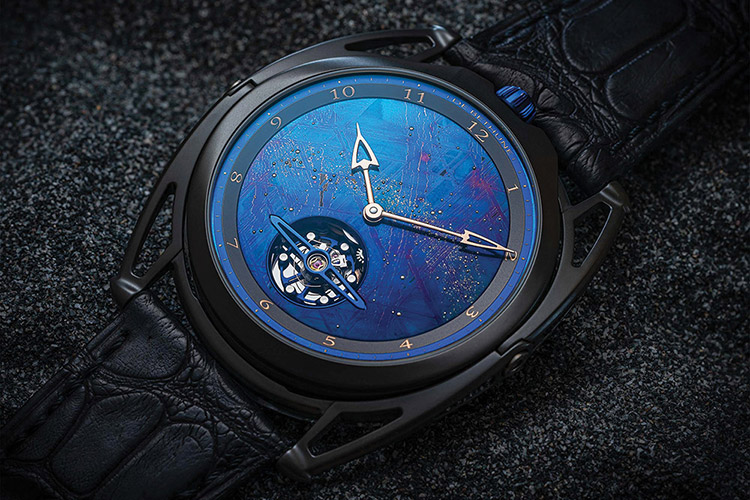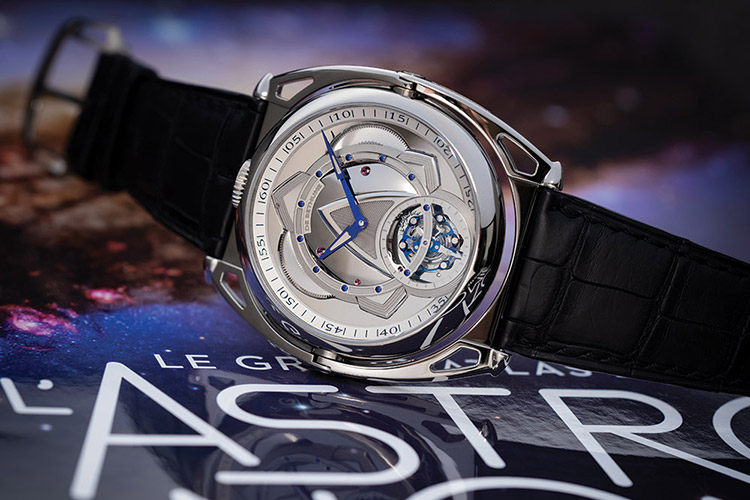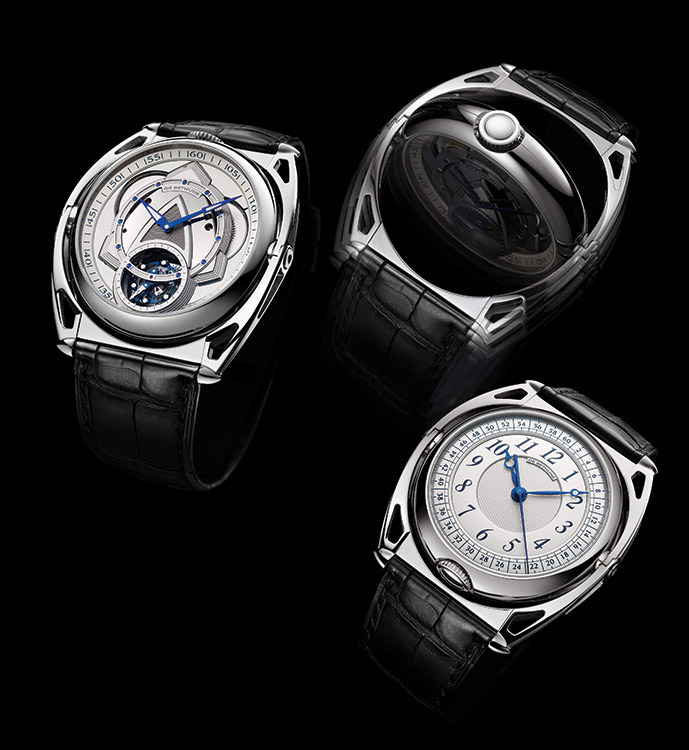
Timepieces from De Bethune are a feast for the eyes and the intellect, and its latest launch, the DB28XP Meteorite, is no exception. Pierre Jacques, CEO of De Bethune, was in town for the debut and we sat down with him for a quick chat. We also bring you some insights into two of their latest horological masterpieces
How has the feedback been for the DB28GS ‘Yellow Submarine’ that you launched recently?
The DB28 has become an iconic model of De Bethune and is very successful; around the world, people now prefer to wear a sports watch as it is suitable for the current lifestyle. The DB28 is a very technical piece and at the same time aesthetically pleasing in both editions – the titanium version and the Yellow Submarine version, which is titanium but with an oxidised case. Yes, it has been successful.
How is the partnership with Black Badger?
Black Badger was the first to develop luminescent material and were able to produce the exact De Bethune blue that we wanted. On the Yellow Submarine, you can see the same blue on the hands, which also has luminescence. The collaboration resulted in the built-in blue colour luminescence, and it has been a fruitful partnership.
Most recently, you have launched the DB28XP Ultra-Thin; is this a line that the brand is planning to continue with?
Yes of course; there is no reason why we should discontinue this line. We will be continuing to produce the historic DB28 as well as the one we debuted in Geneva. The XP model is now part of the collection.
How is the sales of the DB28XP compared to the DB28 and the DB28GS, as they are now three very distinct lines?
It is still the same family; many customers are always looking for the latest versions. Of course, the XP is very successful today, but never forget that the original DB28 is a classic in its own right. The DB28 family is still evolving.

DB28XP Meteorite
The iconic “DB28XP” now appears with a black zirconium case and a meteorite dial featuring distinctive geometric shapes. Only 10 numbered timepieces will be produced. The watch features the Muonionalusta Meteorite, which is believed to have struck planet Earth more than one million years BCE; this is probably the world’s oldest known meteorite to date.
Composed mainly of iron and nickel, it is distinguished by the perfectly geometrical lines of its 60° angle cross-hatched “Widmanstätten” pattern. The dial of the DB28XP Meteorite is adorned with this material. Recreating the magic of the stars amid the vast expanse of the heavens, De Bethune has created a starry sky accompanied by its Milky Way on a previously blued meteorite dial. This azure shade results from the heat released by the chemical reactions of the heated meteorite.
Dotted across this blue dial surface is a multitude of small white gold pins, delicately driven in between the different shapes and thicknesses of the octahedral geometrical structures. Like tiny suspended marbles, these glittering flashes of light endow the celestial vault with its aura of timeless depth. In addition to bringing a unique fragment of space to the wrist, each sky is different: the customer can choose a given constellation, according to a precise sky map, at a specific date, time and place.

DB Kind of Two Tourbillon
De Bethune presents a watch endowed with two faces – two dials, two identities. One side of the watch displays a dial featuring a sleek, contemporary design, with central hours and minutes hands as well as a tourbillon at 6 o’clock, complete with a 30-second indication. Extensive work has been done on integrating polished, curved shapes, matt or glossy components, different thicknesses and levels, thereby creating a sensation of ample space and optimal volume, given the minimum height available for a tourbillon watch. A new type of deltoid-shaped bridge – perfectly symmetrical – is positioned in the centre, like an isosceles triangle that contributes to the overall harmony.
The other side reveals a more traditional dial, with a finely hand-guilloché central part surrounded by the numerals. On this face, the hours, minutes and more surprisingly the seconds hands are all centrally positioned. This represents an extremely subtle technical challenge that is not necessarily perceptible at first glance, and therein lies the elegance of this timepiece.
This model houses a highly sophisticated mechanism based on a complex system of gears and pinions arranged on the front or back of the watch, and which enables the hands to turn in the right direction, regardless of the dial chosen. The aesthetic aspect of two faces guided the technical design of the new calibre entirely developed in-house by De Bethune.







